While there are several specific casting techniques in use to produce cast iron parts, all follow this basic procedure of heating, molding, cooling and ejecting. Read More…
ZETWERK provides high quality grey iron casting components produced using range of materials including aluminum, zinc, copper, brass and bronze alloys. We also perform necessary secondary operations on the grey iron casting parts such as finish machining, surface treatment etc. ZETWERK is ISO 9001:2015 and AS9100D certified. Our grey iron casting plants are IATF 16949:2016 certified.

Metal Technologies produces high quality gray iron, ductile iron, damped iron, austempered ductile, compacted graphite iron, and value-added machining for a variety of industries. Each foundry has unique processes and capabilities that complement specific product families and specifications.

At Ferroloy, Inc., we take pride in our commitment to excellence in the production of grey iron casting products. With a rich legacy spanning several decades, our skilled team of professionals leverages state-of-the-art technology and unparalleled expertise to deliver high-quality castings that meet the diverse needs of our valued clients.

At Mid-City Foundry, we take pride in our expertise and commitment to delivering high-quality grey iron casting products. With decades of collective experience, our team excels in producing robust and reliable components that cater to a diverse range of industrial applications.

Impro Industries is globally recognized as a leading provider of high-precision, high-complexity, and mission-critical casting and machined components. Industries served include automotive, aerospace, medical, and many mor. Our team is dedicated to the quality of our every project, ensuring the highest customer satisfaction. Contact us today to learn more about our grey iron casting capabilities.

More Cast Iron Companies
There are two predominant types of cast iron, those being grey iron and white iron. The former has a graphitic structure, the deflection of which provides the namesake color on fracture surfaces. White iron, however, has small white deposits of cementite rather than being completely pallid. The main differences between the two are silicone content and cooling times, both of which have a significant impact on the physical and mechanical behavior of the alloy.
White iron has a low carbon content and is cooled at a fast rate to produce a brittle cast part with good hardness and abrasion resistance. These are used in a number of wear applications such as slurry pumps, liners, grinding mills and pulverizers. Grey iron castings on the other hand are produced through the slow cooling of high carbon iron alloys and are less brittle allowing their use as crankshafts, support beams, engine blocks and more.
In addition to these two types, iron foundries and metallurgical engineers continue to develop more malleable and ductile irons that exhibit the beneficial characteristics of cast iron, but with significant reductions to brittleness due to a spheroid rather than flaked internal structure. These specialized alloys are becoming increasingly common in the industrial world.
Although pure iron is found only in meteorites, the element is one of the most abundant on Earth making up 5% of the crust and 35% of the total mass. Mining operations extract the element from iron ore and oxides such as magnetite, hematite, limonite, goethite and siderite which contain high levels of iron. These oxides are smelted to produce what is known as pig iron, the base material for cast iron.
The stock forms are heated in a special blast furnace known as a cupola. Scrap iron and steel are added to the molten mixture to produce cast iron. Once in a molten state this metal is poured into a cast where it is cooled at controlled rates before a finished or near finished part is ejected or extracted. Some of the more popular methods used today for iron castings are die casting, centrifugal casting and sand casting.
Die casting is used to manufacture complex parts at high production rates, centrifugal casting creates cylindrical parts and sand casting uses expendable synthetic or natural sand molds to create rough parts. These processes result in easily machined cast iron components with high compression strength, low melting points, good thermal conductivity and energy dissipation, wear resistance and fluidity.






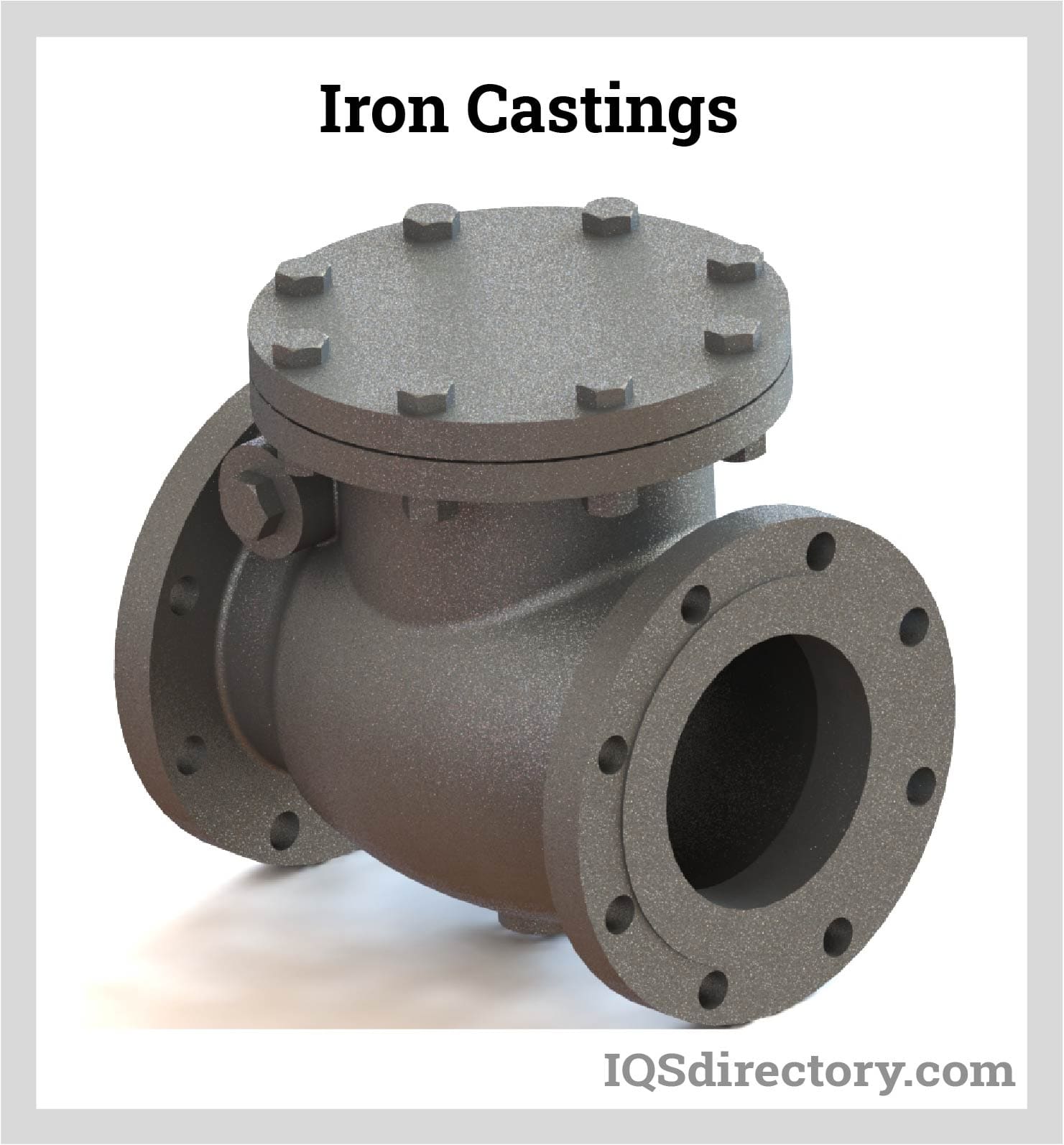
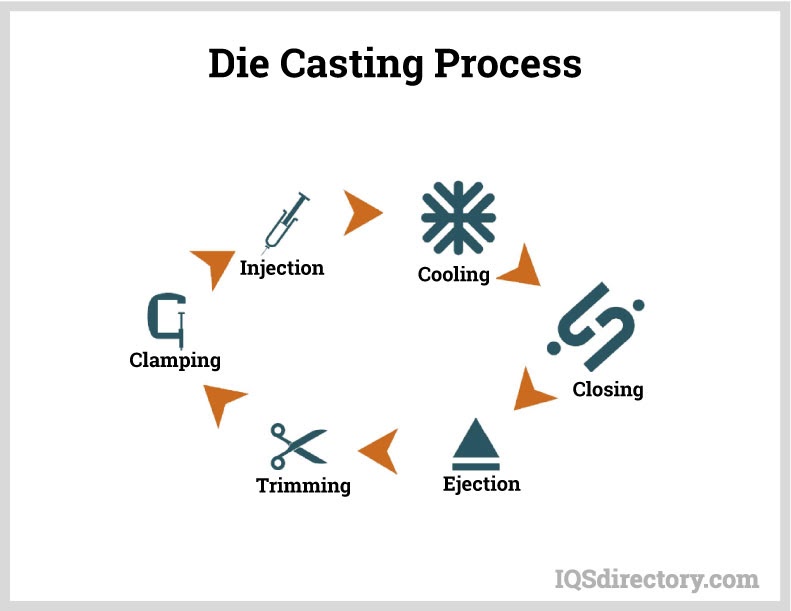
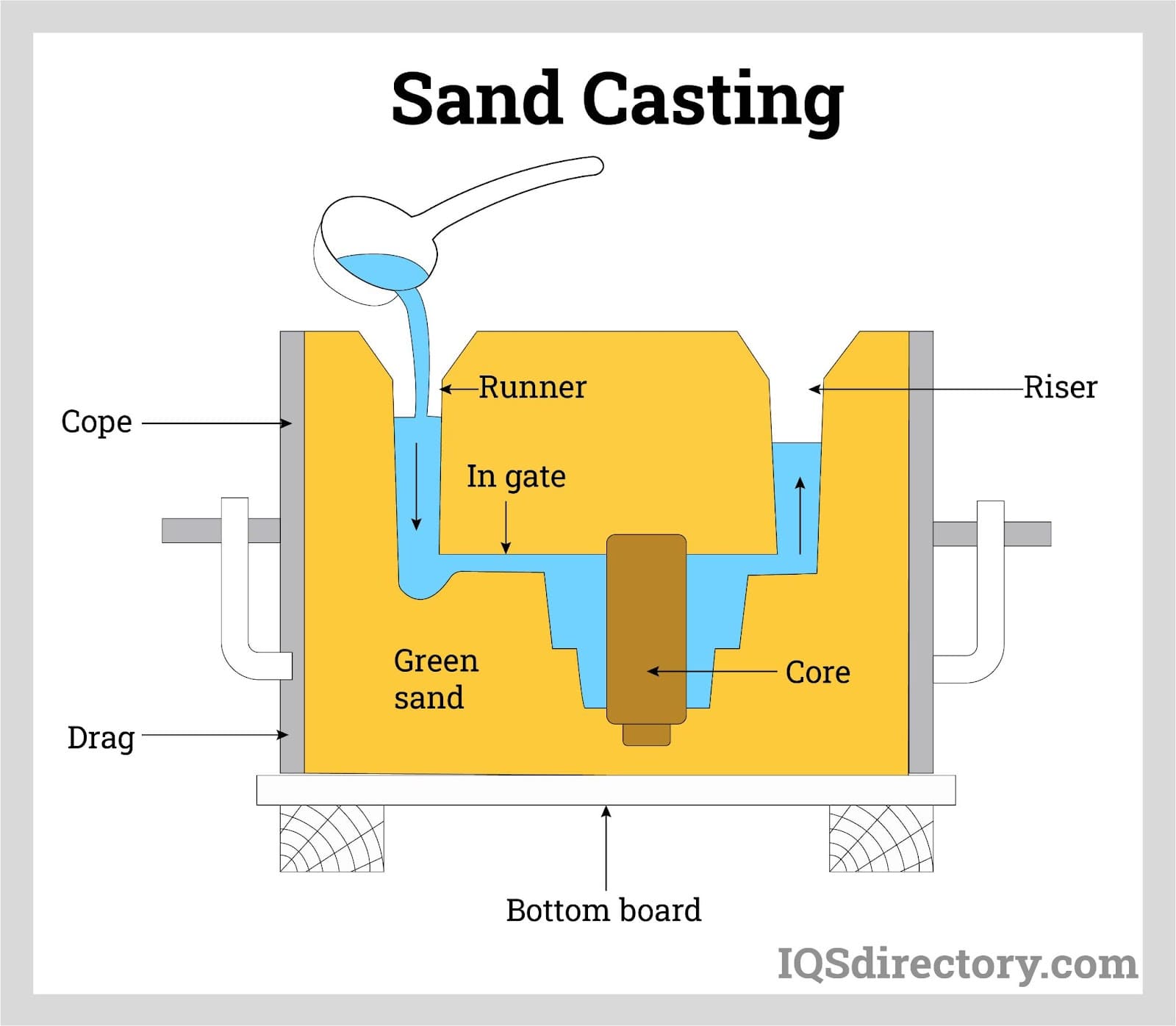
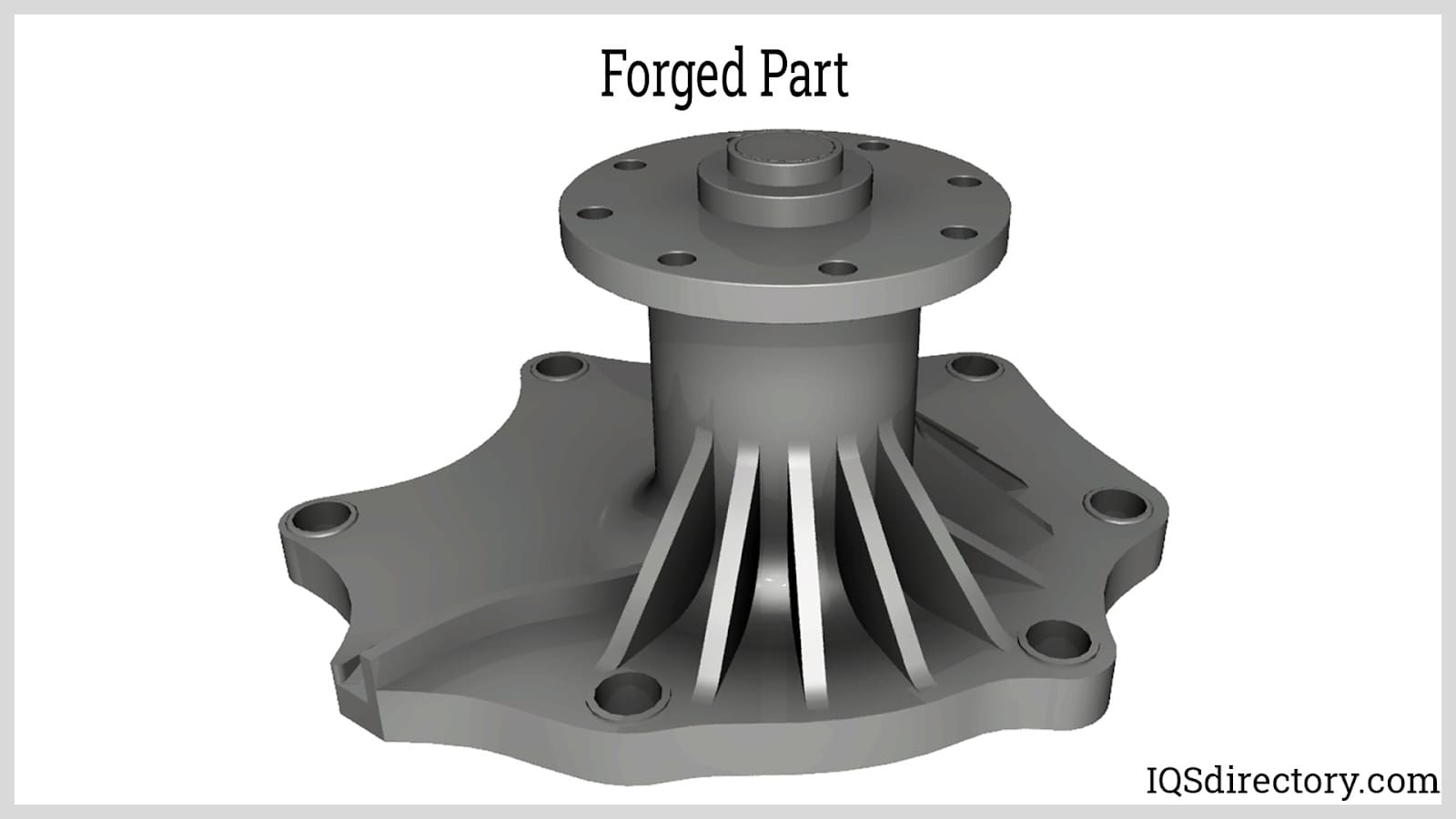
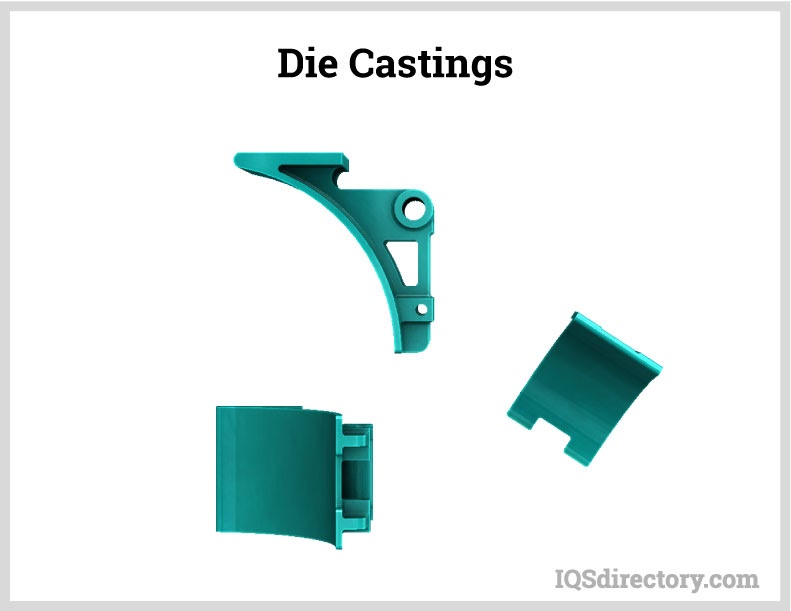
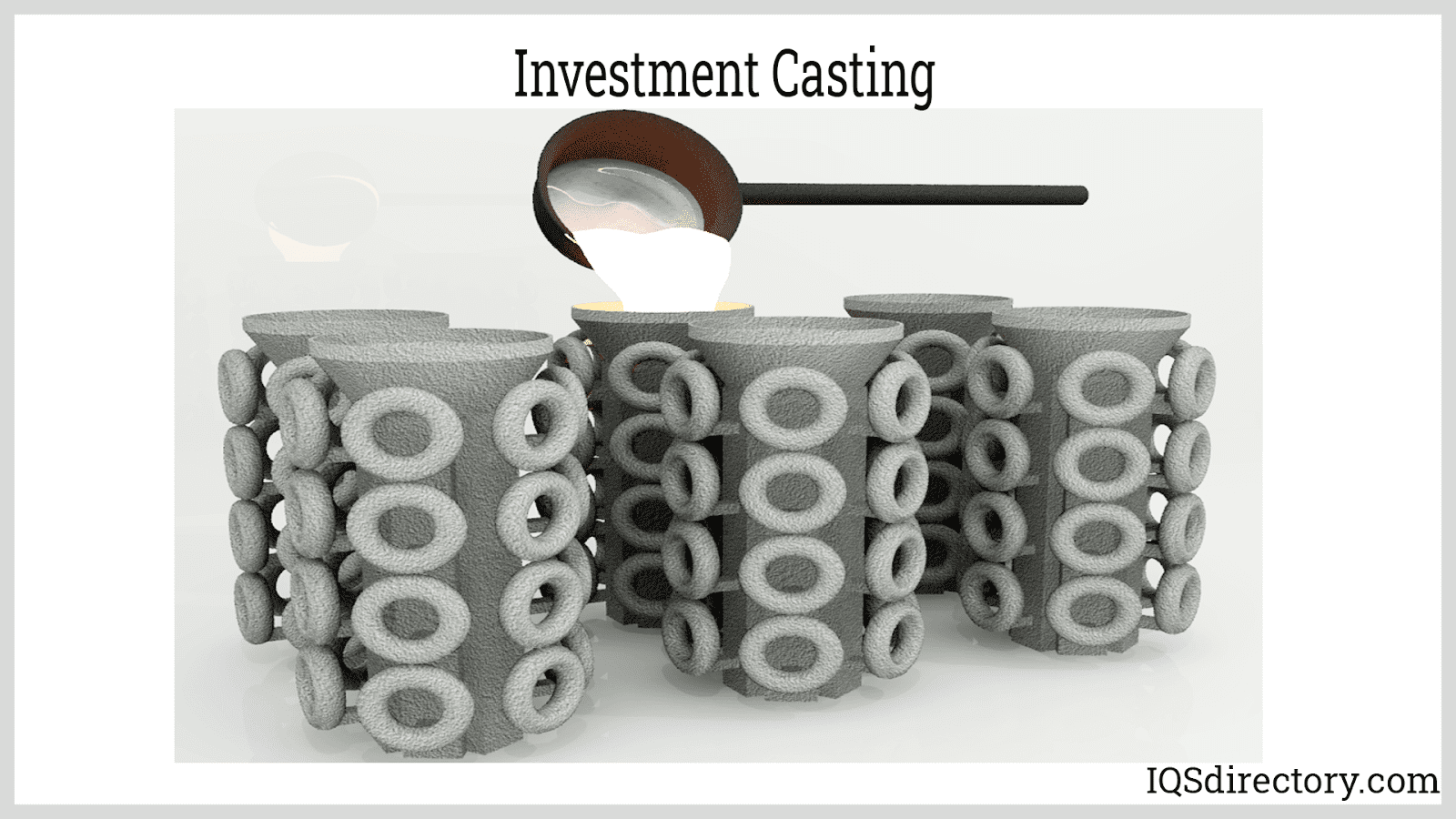
 Die Castings
Die Castings Forgings
Forgings Grey Iron Castings
Grey Iron Castings Investment Castings
Investment Castings Castings & Forgings
Castings & Forgings Bulk Material Handling
Bulk Material Handling Electrical & Electronic Components
Electrical & Electronic Components Flow Instrumentation
Flow Instrumentation Hardware
Hardware Material Handling Equipment
Material Handling Equipment Metal Cutting Services
Metal Cutting Services Metal Forming Services
Metal Forming Services Metal Suppliers
Metal Suppliers Motion Control Products
Motion Control Products Plant & Facility Equipment
Plant & Facility Equipment Plant & Facility Supplies
Plant & Facility Supplies Plastic Molding Processes
Plastic Molding Processes Pumps & Valves
Pumps & Valves Recycling Equipment
Recycling Equipment Rubber Products & Services
Rubber Products & Services